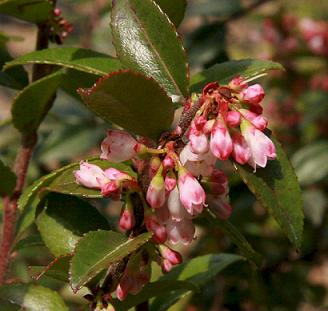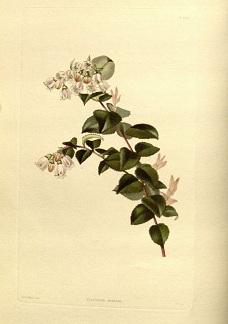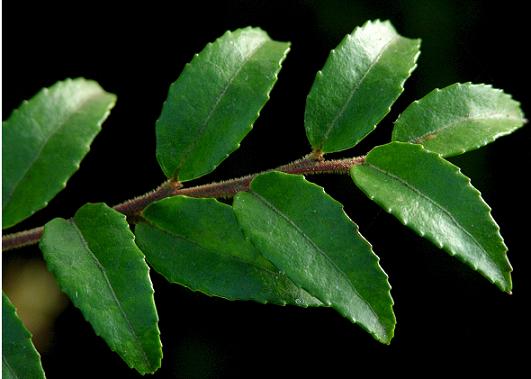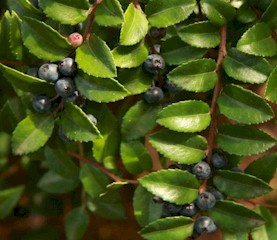|
|
|
Hansen's Northwest Native Plant Database |
|
|
|
Vaccinium ovatum (Evergreen Huckleberry)
|
 |
||||||||||||||||||||||||||||||
|
The superb Evergreen Huckleberry is happy in sun or shade. The delicious fruit for pies, jam and unique toppings is an added bonus. In forested areas it can reach 15’ and spreads to form beautiful, dense stands. The glossy, dark green leaves are small and the new shoots are a bronzy red. In full sun, it dwarfs to 3-5,’ and the mature foliage often turns reddish purple. Hummingbirds love the small, pink-white flowers like fairy bells. Late in the summer, black-purple fruits form. Native only to the Pacific Coast (USDA 6-9), it likes acidic soil and can tolerate salt spray and strong winds. Pamper it with a layer of mulch and you will be richly rewarded with a first class ornamental shrub for the native garden. This northwest native shrub was first noted by Captain Lewis at Oregon's Fort Clatsop on January 27, 1806. Favored by native peoples Quinault, Straits Salish and others, the dusky berries of the native huck are hunted far and wide when they begin to ripen in the late summer, early autumn. Though said to reach their best flavor after the first frost, the piquant juiciness is nonetheless a longtime staple for many a knowledgeable woodsman. |
 |
||||||||||||||||||||||||||||||
|
The shrub offers year-round beauty with it's dark shiny green leaves, paler underneath, it's pink flowers and those beautiful and delicious shiny fruits. The Evergreen Huckleberry (Vaccinium ovatum) is a lovely and appropriate shrub for inclusion in your Lewis and Clark garden. The pleasing bushy shape is a sturdy specimen or natural companion at the edge of coniferous trees. Delicious, ripe and juicy wild huckleberries -- Oh, my! Baked in a pie, made into jam or eaten fresh out of hand, the Evergreen Huckleberry (Vaccinium ovatum) is one of my very favorite northwest native plants. |
|||||||||||||||||||||||||||||||
  |
|||||||||||||||||||||||||||||||
|
This shrub is a "must-have" for every native garden. Beautiful and very well behaved in the landscape, loved by birds and children alike. Robert Frost's poem, Blueberries, begins: "You ought to have seen what I saw on my way To the village, through Mortenson's pasture to-day: Blueberries as big as the end of your thumb, Real sky-blue, and heavy, and ready to drum In the cavernous pail of the first one to come! And all ripe together, not some of them green And some of them ripe! You ought to have seen!" Was he writing about tamed and hybridized and cultured blueberries, do you think? No! He was writing about wild blue berries -- huckleberries! I think Mark Twain named our beloved barefoot boy Huckleberry Finn because he remembered plucking those wonderful blue berries and popping them into his mouth. Standing in the sunshine, juice dripping down his chin, can't you just see him? I can. Northwest native huckleberries. Oh my! Plant some in your garden for your barefoot boy. Or for yourself. And eat some right off the bush, standing in the sun, and remember how it must have been for Huck and Jim. For a short comparison of northwest native huckleberry family plants, click here. |
|||||||||||||||||||||||||||||||
|
Photos We Share!
|
|||||||||||||||||||||||||||||||
|